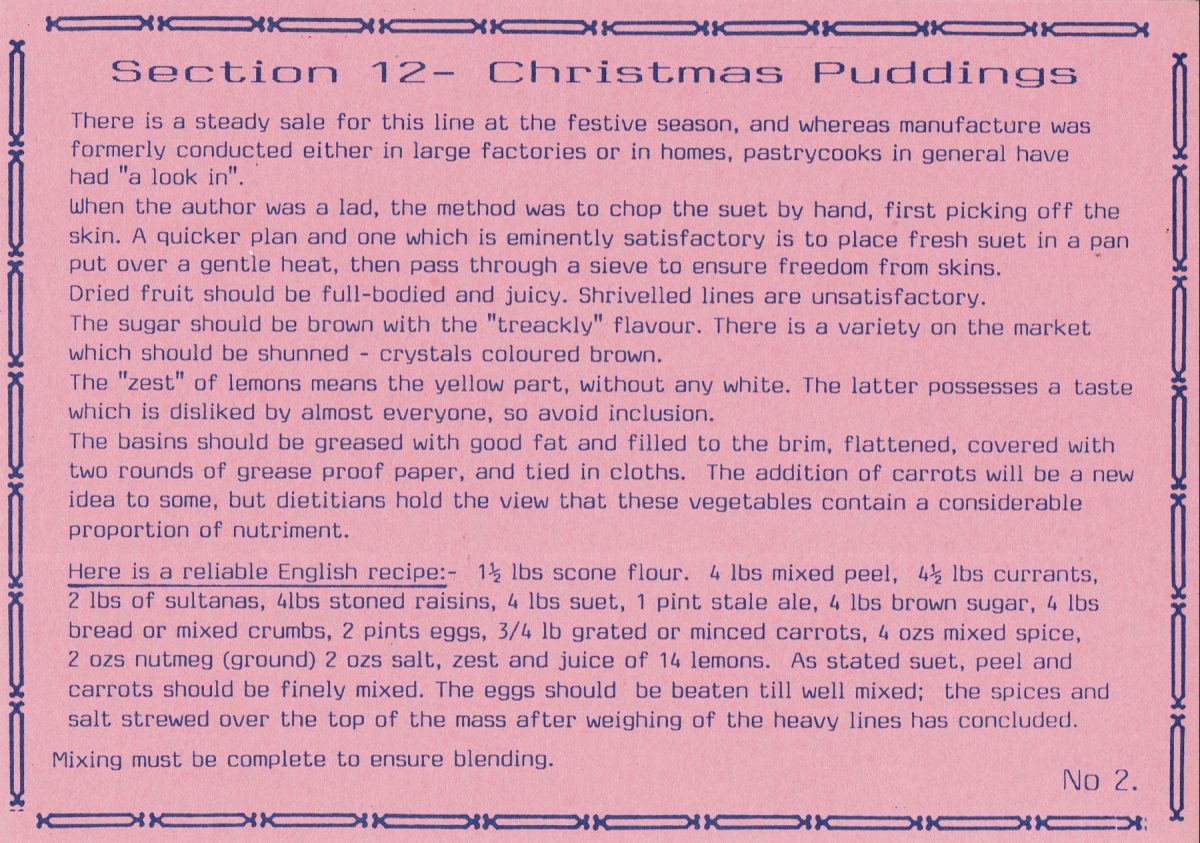Section 12 – Christmas Puddings
There is a steady sale for this line at the festive season, and whereas manufacture was formerly conducted either in large factories or in homes, pastrycooks in general have had “a look in”.
When the author was a lad, the method was to chop the suet by hand, first picking off the skin. A quicker plan and one which is eminently satisfactory is to place fresh suet in a pan put over a gentle heat, then pass through a sieve to ensure freedom from skins.
Dried fruit should be full-bodied and juicy. Shrivelled lines are unsatisfactory.
The sugar should be brown with the “treackly” flavour. There is a variety on the market which should be shunned – crystals coloured brown.
The “zest” of lemons means the yellow part, without any white. The latter possesses a taste which is disliked by almost everyone, so avoid inclusion.
The basins should be greased with good fat and filled to the brim, flattened, covered with two rounds of grease proof paper, and tied in cloths. The addition of carrots will be a new idea to some, but dietitians hold the view that these vegetables contain a considerable proportion of nutriment.
Here is a reliable English recipe: – 1½ lbs scone flour, 4 lbs mixed peel, 4½ lbs currants, 2 lbs of sultanas, 4lbs stoned raisins, 4 lbs suet, 1 pint stale ale, 4 lbs brown sugar, 4 lbs bread or mixed crumbs, 2 pints eggs, ¾ lb grated or minced carrots, 4 ozs mixed spice, 2 ozs nutmeg (ground) 2 ozs salt, zest and juice of 14 lemons. As stated suet, peel and carrots should be finely mixed. The eggs should be beaten till well mixed; the spices and salt strewed over the top of the mass after weighing of the heavy lines has concluded.
Mixing must be complete to ensure blending.
No 2.













Do you know something about this record?
Please note we cannot verify the accuracy of any information posted by the community.